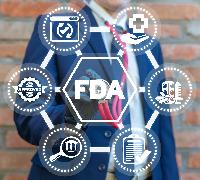The USDA Organic: Understanding the Label and Its Implications

Posted by netitos116
from the Agriculture category at
17 Apr 2024 10:36:27 am.
The National Organic Program: Setting the StandardsThe foundation of organic labeling in the US lies in the National Organic Program (NOP), established in 1990 under the Department of Agriculture (USDA). The NOP defines organic production and handling practices, ensuring consumers have access to products that meet specific criteria. These criteria encompass a range of factors, including:
Synthetic Restrictions:
The use of synthetic fertilizers, pesticides, herbicides, and genetically modified organisms (GMOs) is strictly prohibited in organic production. Farmers rely on natural methods like crop rotation, cover cropping, and beneficial insects to manage soil fertility and pests.
Animal Welfare: Organic livestock must have access to the outdoors, organic feed, and humane living conditions. The NOP mandates producers provide animals with sufficient space for natural behaviors and prohibits the use of antibiotics or growth hormones for non-therapeutic purposes.
Handling and Processing:
Organic certification extends beyond the farm. Processing facilities must adhere to strict guidelines to ensure organic integrity is maintained throughout the supply chain. This includes using approved cleaning materials, preventing contamination from non-organic products, and maintaining clear labeling throughout processing.
Benefits of Going Organic: A Multifaceted ImpactChoosing USDA Organic offers a multitude of advantages:
Consumer Health: Many consumers opt for organic products in the belief they may reduce exposure to potentially harmful synthetic residues. Additionally, organic farming practices may promote higher levels of certain antioxidants and beneficial nutrients in some foods.
Environmental Protection:
Organic agriculture fosters ecological balance. By eliminating synthetic chemicals, it protects soil and water quality, reduces pollution, and promotes biodiversity. This, in turn, benefits wildlife and the overall health of ecosystems.
Animal Welfare: USDA Organic animal husbandry prioritizes the well-being of livestock. Animals have access to natural environments, organic feed, and are treated humanely. This translates to better quality of life for the animals.
Supporting Sustainable Practices: By choosing organic products, consumers support farmers who are committed to environmentally responsible and sustainable agricultural practices. This strengthens the market for organic agriculture and encourages its continued growth.
Cost:
Organic production generally requires more labor and resources compared to conventional methods. This can translate to higher costs for consumers, although the price gap is narrowing as organic production becomes more efficient.
Availability:
Organic options may not always be readily available in all areas, especially for certain products. Consumers in rural locations may have less access to organic choices compared to those in urban centers.
Yield:
Organic farming practices typically yield lower crop yields compared to conventional methods. This can impact overall food production and affordability, particularly for staple crops.
100% Organic:
Products labeled as "100% Organic" must contain all organic ingredients.
Organic:
Products with the "Organic" label must contain at least 95% organic ingredients. Up to 5% of non-organic ingredients may be allowed, provided they are on the National List of Allowed and Prohibited Substances.
Made with Organic Ingredients:
Products labeled "Made with Organic Ingredients" must contain at least 70% organic ingredients. These products can specify up to three organic ingredients or ingredient categories on the front label.
Here are some key trends shaping the future of organic:
Technological Advancements:
Research and development are leading to innovative methods for organic pest and disease control, soil fertility management, and improved organic crop yields. These advancements will make organic farming more efficient and cost-effective.
0 Comments



